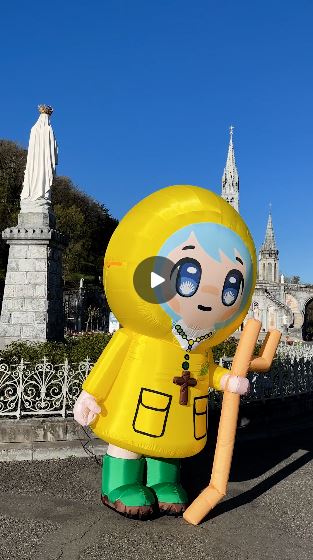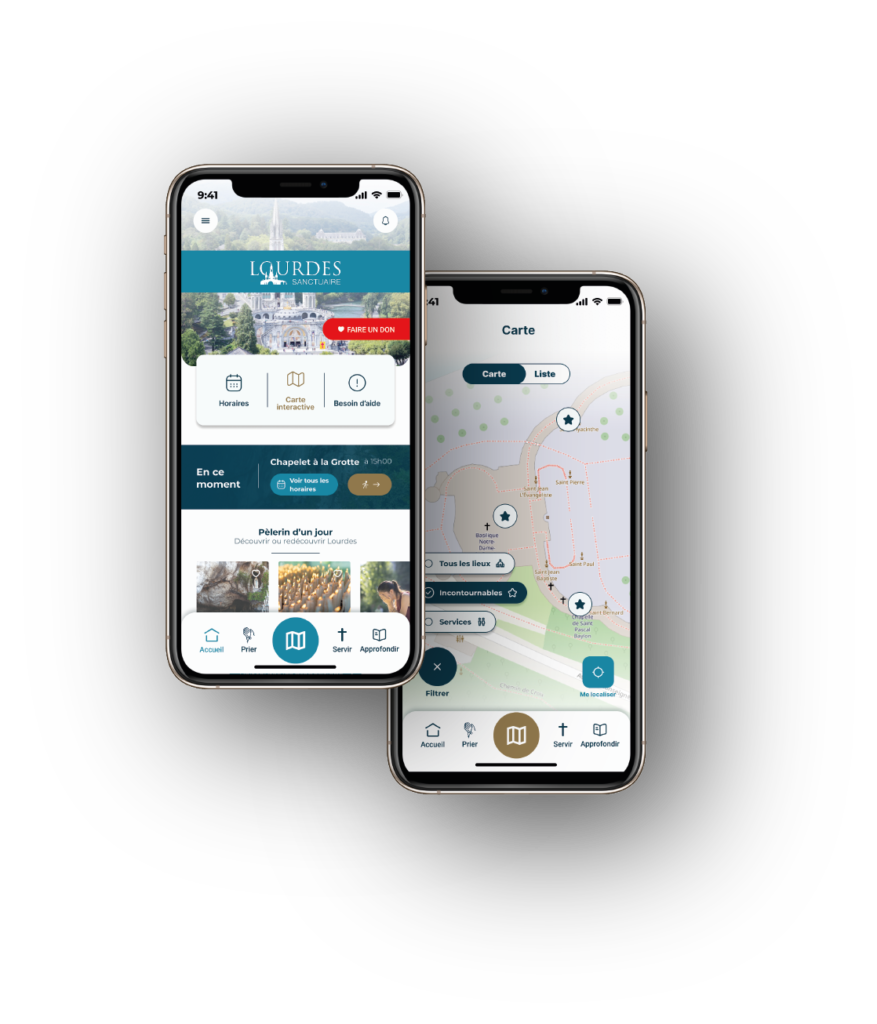Youth tent
There is now a new HQ for youth ministry and for young people... the tent on the prairie (formerly the adoration tent).
The tent on the prairie – formely the adoration tent – has recently refurbished with 3 objectives in mind:
1. to facilitate on-site catechesis and conferences requested from the youth ministry.
2. to allow large groups to play sports on the prairie, with equipment available in the tent (on the prairie side)
3. to allow small groups to take a break around a coffee table with a library and some sofas (available on the Gave side of the tent).
The Lord appeared to Abraham by the oaks of Mamre, as he sat at the entrance of his tent in the heat of the day. He looked up and saw three men standing near him. When he saw them, he ran from the tent entrance to meet them, and bowed down to the ground. He said, ‘My lord, if I find favour with you, do not pass by your servant. Let a little water be brought, and wash your feet, and rest yourselves under the tree. Let me bring a little bread, that you may refresh yourselves, and after that you may pass on—since you have come to your servant.’ So, they said, ‘Do as you have said.’ Genesis 18 :1-5
The tent project is all about experiencing the same welcome that Abraham affords his visitors.
To be there, seated, in the hottest and coldest hours of the day.
To get up and run to welcome each young person
To offer each young person a place to stop for a drink or something to eat, to rest and regain their strength.
A stopover in this tent that will allow them to get going again, to return to their service, or otherwise.
“Welcoming pilgrims, in groups or individually, especially the sick and the poorest, must always be the benchmark for the mission and organisation of the sanctuary.” Letter on Mission from Fr Michel Daubanes.
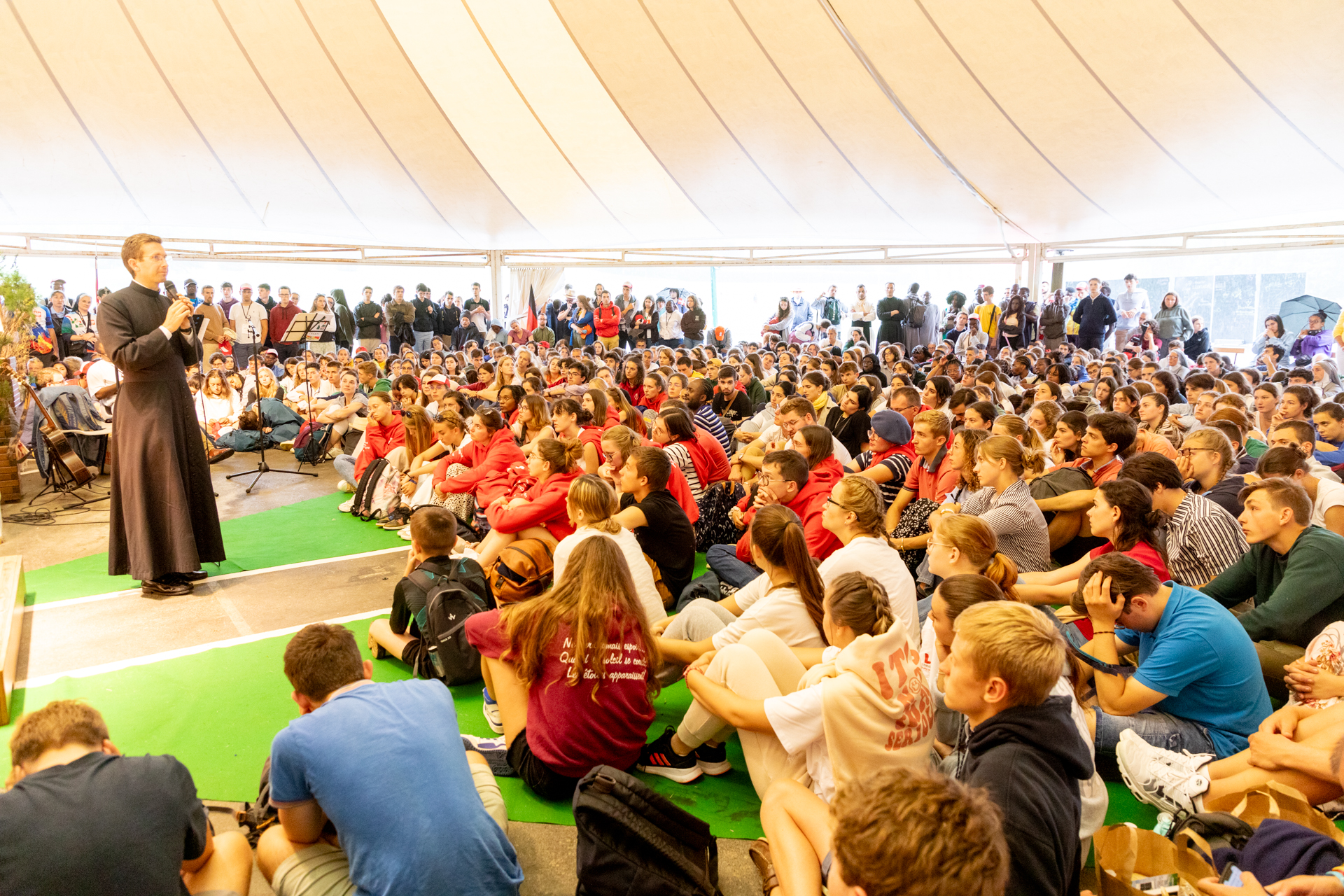
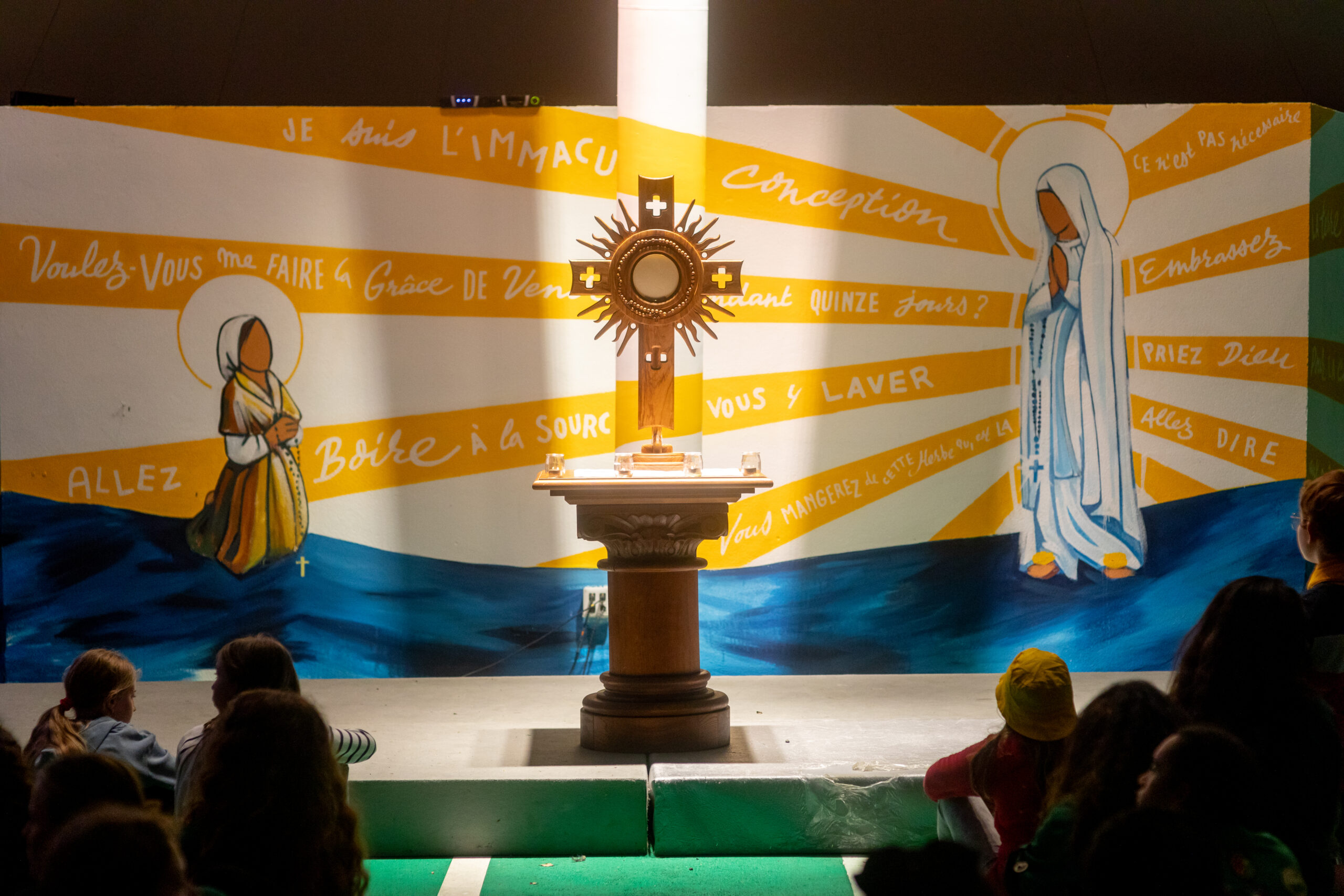
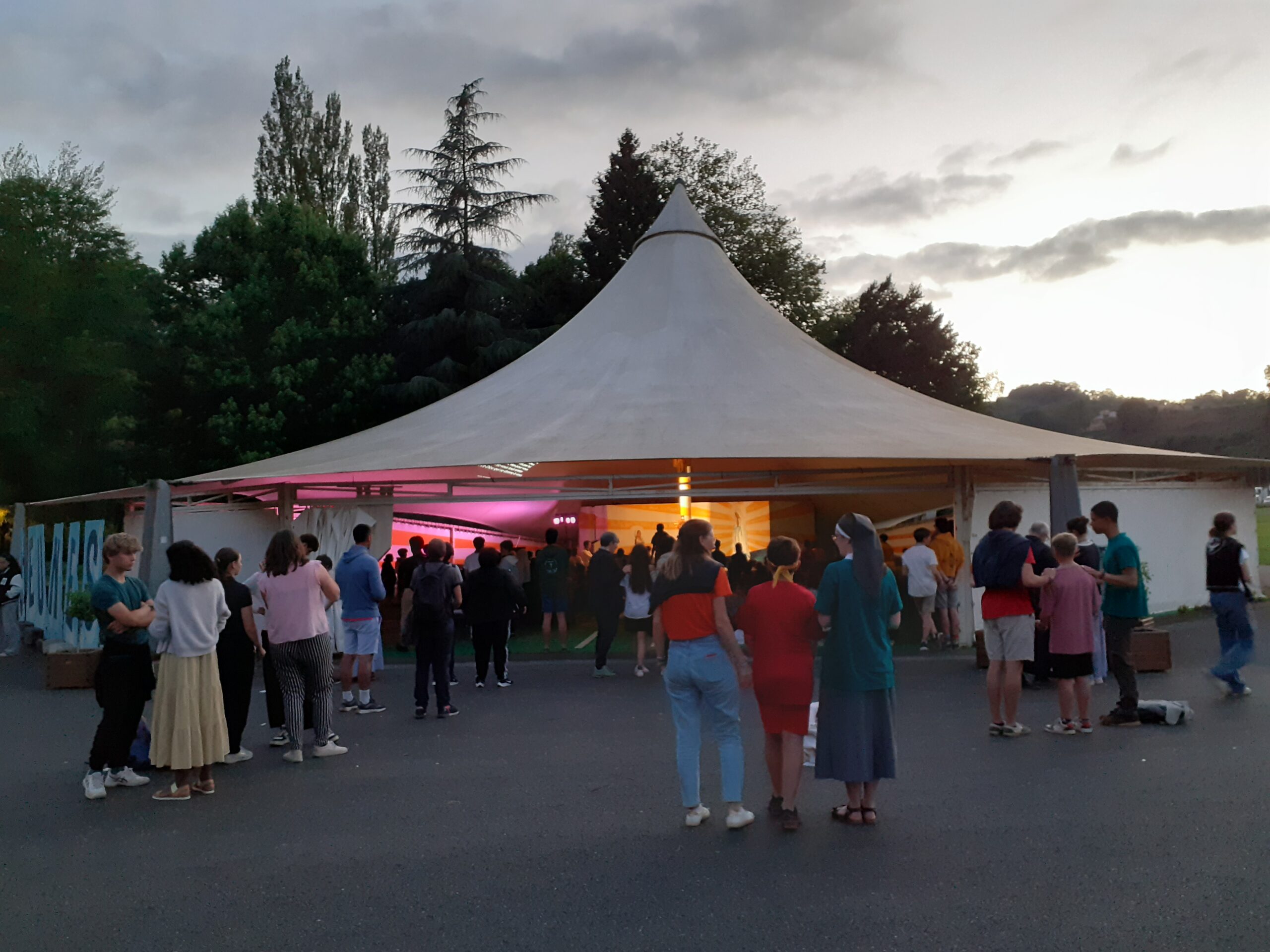
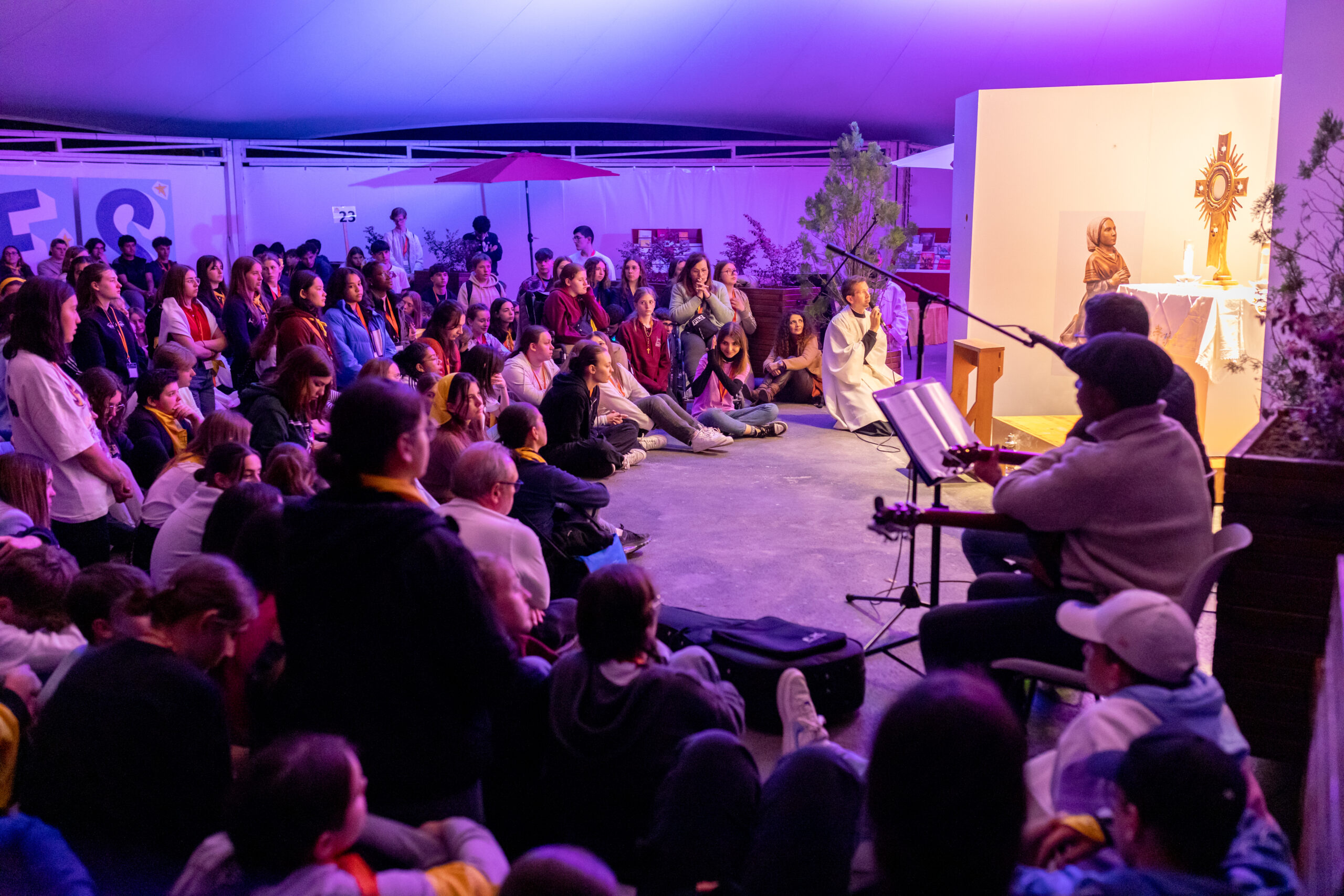
Observation:
During the Synod, it was recognised that ‘a substantial number of young people, for sorts of reasons, do not ask the Church for anything because they do not see her as significant for their lives. Some even ask expressly to be left alone, as they find the presence of the Church a nuisance, even an irritant.’ CV 40.
‘Other young people want a Church that listens more, that does more than simply condemn the world. They do not want to see a Church that is silent and afraid to speak, but neither one that is always battling obsessively over two or three issues. To be credible to young people, there are times when she needs to regain her humility and simply listen, recognizing that what others have to say can provide some light to help her better understand the Gospel. A Church always on the defensive, which loses her humility and stops listening to others, which leaves no room for questions, loses her youth and turns into a museum.’ CV 41.
Welcoming all young people:
‘In this outreach, we need to use above all the language of closeness, the language of generous, relational and existential love that touches the heart, impacts life, and awakens hope and desires. Young people need to be approached with the grammar of love, not by being preached at. The language that young people understand is spoken by those who radiate life, by those who are there for them and with them. And those who, for all their limitations and weaknesses, try to live their faith with integrity. We also have to give greater thought to ways of incarnating the kerygma in the language of today’s youth.’ CV 211.
Supporting each young person:
‘Any educational project or path of growth for young people must certainly include formation in Christian doctrine and morality. It is likewise important that it have two main goals. One is the development of the kerygma, the foundational experience of encounter with God through Christ’s death and resurrection. The other is growth in fraternal love, community life and service.’ CV 213.
Discerning what is true, good and beautiful:
‘Youth ministry should always include occasions for renewing and deepening our personal experience of the love of God and the living Christ. It can do this in a variety of ways: testimonies, songs, moments of adoration, times of spiritual reflection on the sacred Scriptures, and even an intelligent use of social networks. Yet this joyful experience of encounter with the Lord should never be replaced by a kind of “indoctrination”.’ CV 214.
Entering through the narrow gate:
‘To create a “home” is to create “a family”. “It is to learn to feel connected to others by more than merely utilitarian and practical bonds, to be united in such a way as to feel that our life is a bit more human. To create a home is to let prophecy take flesh and make our hours and days less cold, less indifferent and anonymous. It is to create bonds by simple, everyday acts that all of us can perform. A home, as we all know, demands that everyone work together. No one can be indifferent or stand apart, since each is a stone needed to build the home. This also involves asking the Lord to grant us the grace to learn how to be patient, to forgive one another, to start over each day.’ CV 217.
Sharing with those who are passing through:
‘Our institutions should provide young people with places they can make their own, where they can come and go freely, feel welcome and readily meet other young people, whether at times of difficulty and frustration, or of joy and celebration. Some of this is already happening in oratories and other youth centres, which in many cases offer a friendly and relaxed setting where friendships can grow, where young men and women can meet one another, where they can share music, games, sports, but also reflection and prayer. In such places, much can be offered, without great expenditure of funds. Then too, the person-to-person contact indispensable for passing on the message can happen, something whose place cannot be taken by any pastoral resource or strategy.’ CV 218.
A final word:
‘What is most important, though, is that each young person can be daring enough to sow the seed of the message on that fertile terrain that is the heart of another young person.’ CV 210.


